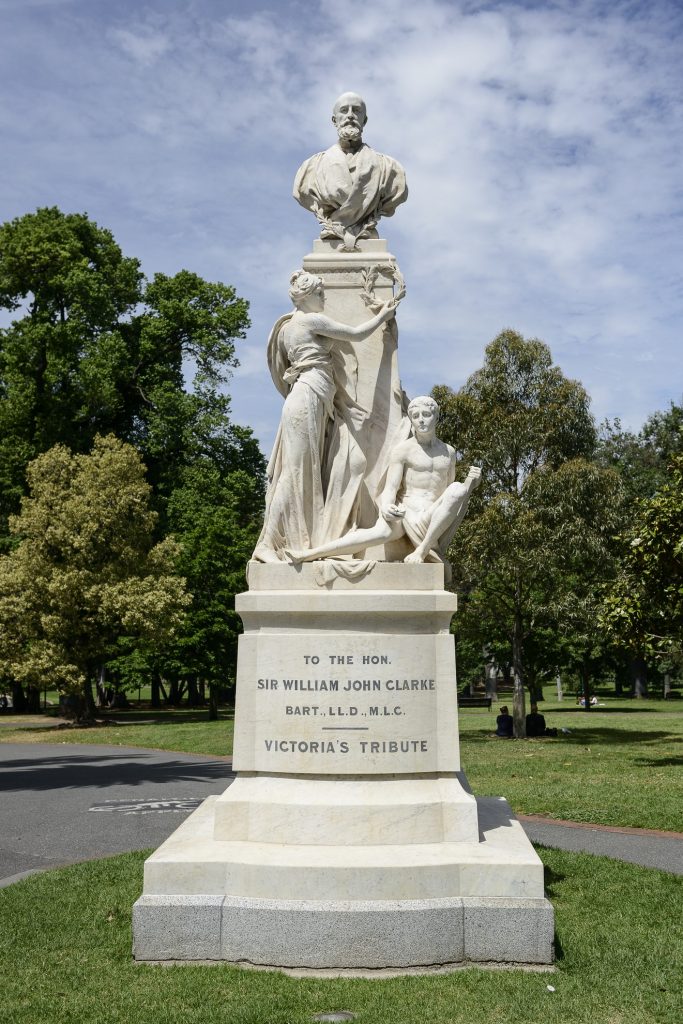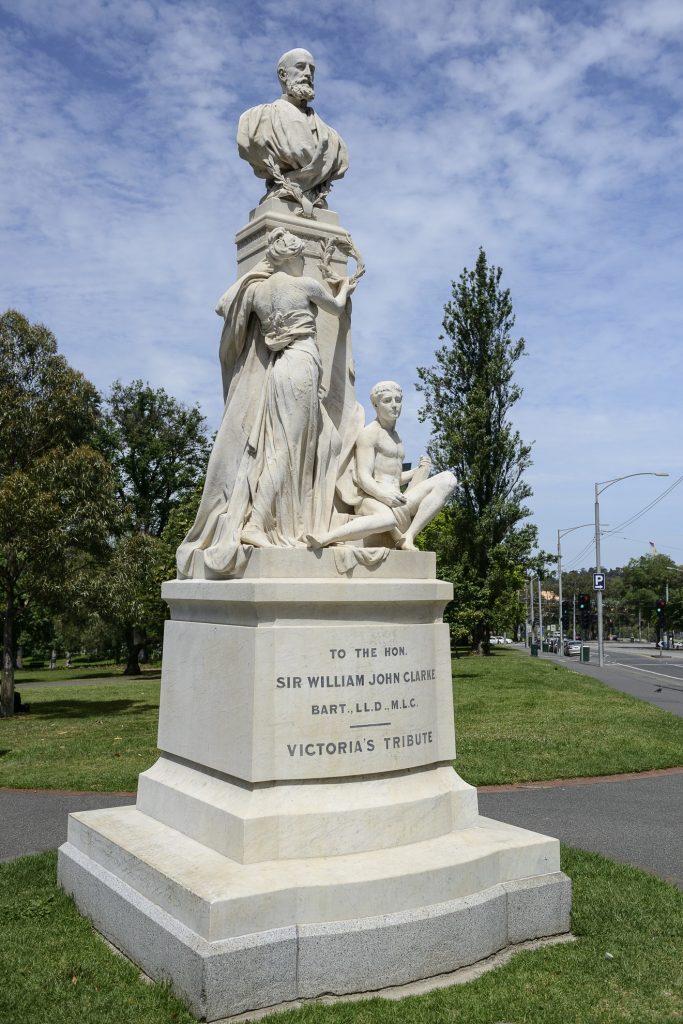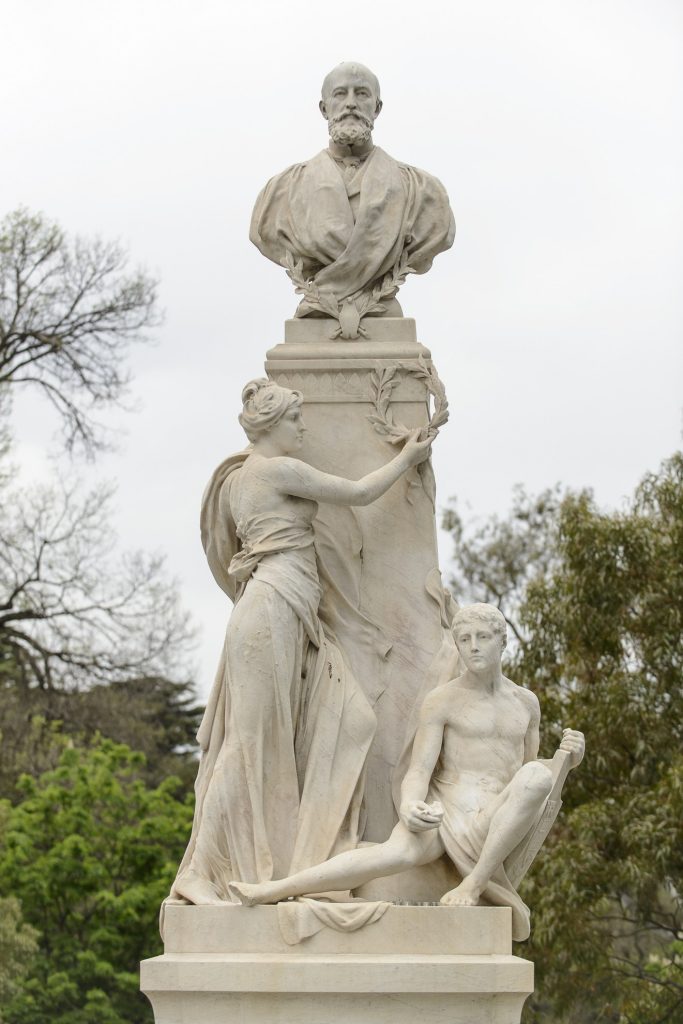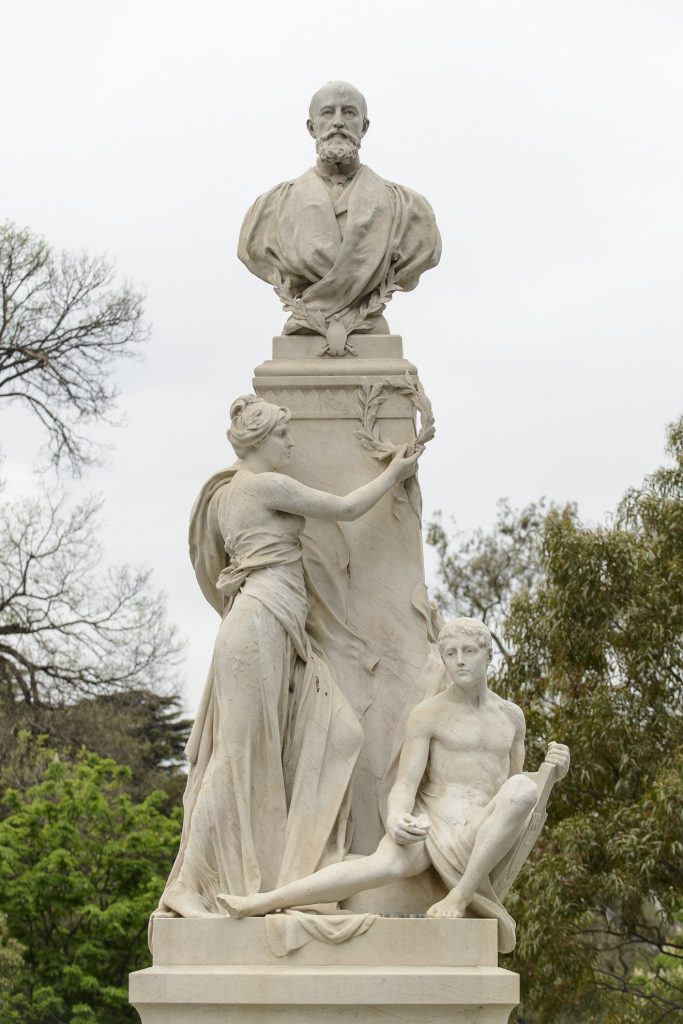There are two inscriptions: Bertram MacKennal / London 1902 / TO THE HON. / SIR WILLIAM JOHN CLARKE / BART., L.L.D., M.L.C. / VICTORIA''''''''S TRIBUTE
Edgar Bertram Mackennal, William John Clarke, Tasmania, 1831, marble statue, 1902, Treasury Gardens
Summary
Location: Treasury Gardens, Spring St
Bust of Sir William John Clarke on a marble pedestal. Underneath him is a woman offering a wreath (representing the State of Victoria) and a young man with a scroll (representing education).
Following Clarke’s death, a public meeting was held to determine how best to memorialise him. The monument, it was thought, must be ‘of heroic size’ and yet in keeping with Clarke’s modesty. Mackennal sculpted the marble in London in consultation with Clarke’s son-in-law and with the final approval of Lady Janet Clarke. After much deliberation over a suitable site for the memorial, the entrance to the Fitzroy Gardens was decided upon, and at 4pm on 22 July 1902, it was unveiled by the State Governor, Sir George Sydenam Cole. In presenting the memorial, E.G. Fitz Gibbon declared the memorial was "rendered to keep the name and worth of Sir William John Clarke green in the memory of the community which he loved so well, and served so nobly."
William John Clarke was born in Tasmania in 1831 and moved to Victoria in 1860. A philanthropist and wealthy pastoralist, he gave generously to the building funds for St Paul’s Cathedral and Trinity College, and supported several other causes. He was actively involved in many areas of public life and was the first Australian to be made baronet. He died in 1897, stepping from a tramcar in Collins Street.
Born in Fitzroy in 1863, Mackennal studied at the Melbourne Model School, King's College, and the National Gallery. He travelled to London, Paris and Italy in 1882, before being appointed head of modelling and design at Coalport Potteries in Shropshire in 1886.|He briefly returned to Melbourne to make relief panels for Parliament House, but soon returned to Paris in 1891. He exhibited at the Royal Academy in 1895 and soon found himself in demand. Some of his commissions include Queen Victoria (in England, India and Ballarat), the statues of Cardinal Moran and Archbishop Kelly at St Mary's Cathedral, Sydney, the medal for the London Olympics and several statues around Melbourne including Sir William Clarke and King Edward VII. He was Knighted in 1921, and elected to the Royal Academy in 1922.



